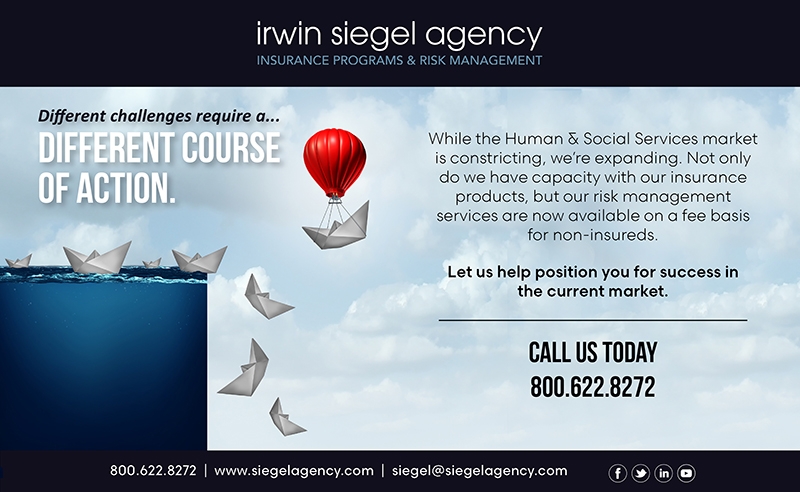According to the Office of Disability Employment Policy, “Americans on the autism spectrum experience substantial challenges to attaining competitive integrated employment opportunities that match their interests, gifts, and talents. They experience substantial unemployment and underemployment, according to the research literature.” Establishing an inclusive and supportive workplace for individuals on the autism spectrum relies upon employers willing to commit to the safety and understanding of all employees. Using equity as the lens, rather than equality, ensures appropriate modifications will promote an inclusive and successful workplace relationship.

Many years ago, I worked as a case manager for adults with intellectual and developmental disabilities. As with any person, each had their own unique talents requiring cultivation to get to the truest potential. One young man was exceptionally eager to work. While friendly and helpful, there were some concerns about successfully following two to three step instructions. An employment coach was confident that a job at a local auto repair shop would be a great fit based on personality. The job duties were largely maintenance-based and well within the person’s skill range. As time went on, supervision became lax, leading to immediate red flags. By the time the information made its way back to me, numerous reports stated circumstances where he was found under vehicles with tools, operating machinery, and involved in duties outside of the role they had been employed to carry out. The employer determined the risk was too high to continue employment. Termination devastated this person, leading to negative self-talk as well as heightened anxiety around any new job prospects.

Heather Purcell
In this brief scenario there are clear missed opportunities preceding the outcome. They fall heavily upon the support team’s mismanagement. Employers looking to create an inclusive setting for employees with Autism should consider multiple avenues to determine what works best for their business. Some individuals with Autism will not need significant workplace supports. Some may need or be receiving external supports from a provider. Some may benefit from accommodations within the current employee structure. These are all worth considering when exploring the hiring process in order to identify the candidate’s needs. This process is not very different from any other hiring process, looking at skillset and determining potential as an employee.
Each state has varying degrees of available employment services. These services provide a scope of support from skill development to on-the-job mentorship. Employers can become leaders in inclusive employment by considering the state based supports available to potential employees. Establishing a partnership with employment support organizations can create a secure foundation where the employee will thrive and meet job expectations. These job expectations should be clearly defined and outlined. Consider the above situation. To circumvent an employee’s drive to go above and beyond, also include a list of non-responsibilities. For example, it was not his responsibility to operate machinery, move parts around, or perform duties without being asked by the supervisor. Setting boundaries in an employee’s responsibilities will ensure they have established parameters in their role.
Equally important is ensuring the position fits the employee’s unique range of abilities. If we consider the analogy of fitting a square peg in a round hole, it applies in this situation. The logical choice is to fit each peg into the appropriate hole. This may mean assessing the position and making reasonable accommodations so the employee can be successful. Expecting the employee to adapt to expectations outside of their skill level is not best practice. Consider the sensory demands of the position in order to ensure they will not be overwhelming, distracting, or barriers to a successful employee/employer partnership.
Mentorship is extremely valuable when establishing an inclusive work environment. Challenges with interpersonal skills and fitting in may be a barrier to an employee with Autism. Placing a fellow employee within supporting distance is one way to ensure work tasks are holistically managed and encouraged. This also promotes skill-based learning through mirroring. Mirroring is when a person with a disability learns through the real-time example of watching another person perform the same task. This can also be the function of a job coach if the employee receives that type of support mentioned earlier within this article. Consult with local and state-based providers to learn more about regional support offerings.
While these recommendations are largely related to the function of Human Resources, they are steps which can limit the risks associated with managing an inclusive workforce. Supervision and clear responsibilities set the tone for an environment which is safe. In these environments, each person works within their hired expectations. When adhering to concrete job duties there is less risk than one would experience in a more subjective role where responsibilities shift or may be a bit gray. Supervision and mentorship which meet the employee’s needs leave little risk for accident or injury. This is because there is always a helpful member of the team available to provide guidance and support from keeping the employee on task to recognizing if they are in a potentially hazardous situation.
The benefits of creating an inclusive workplace environment can far exceed the risk when making minor changes to the traditional way that jobs function. These modifications are worth implementing. They lead to meaningful employment opportunities for people with Autism.
Heather Purcell is Risk Management Specialist at Irwin Siegel Agency. Heather has earned a Bachelor of Science degree in Community and Human Services. She is the chairperson for the Orange County Community Services board I/DD subcommittee with thirteen years of experience in the human service field. Irwin Siegel Agency (ISA) has been the leading Program Administrator for the Human and Social Service industry for decades. Members of the Risk Management Division from ISA come from a Social Service background, giving them an accurate perspective of the day-to-day challenges that provider agencies face when it comes to managing risk. For more information contact riskmanagement@siegelagency.com.
References
Office of Disability Employment Policy (n.d.). Autism. https://www.dol.gov/agencies/odep/program-areas/autism#:~:text=Americans%20on%20the%20autism%20spectrum,according%20to%20the%20research%20literature.






